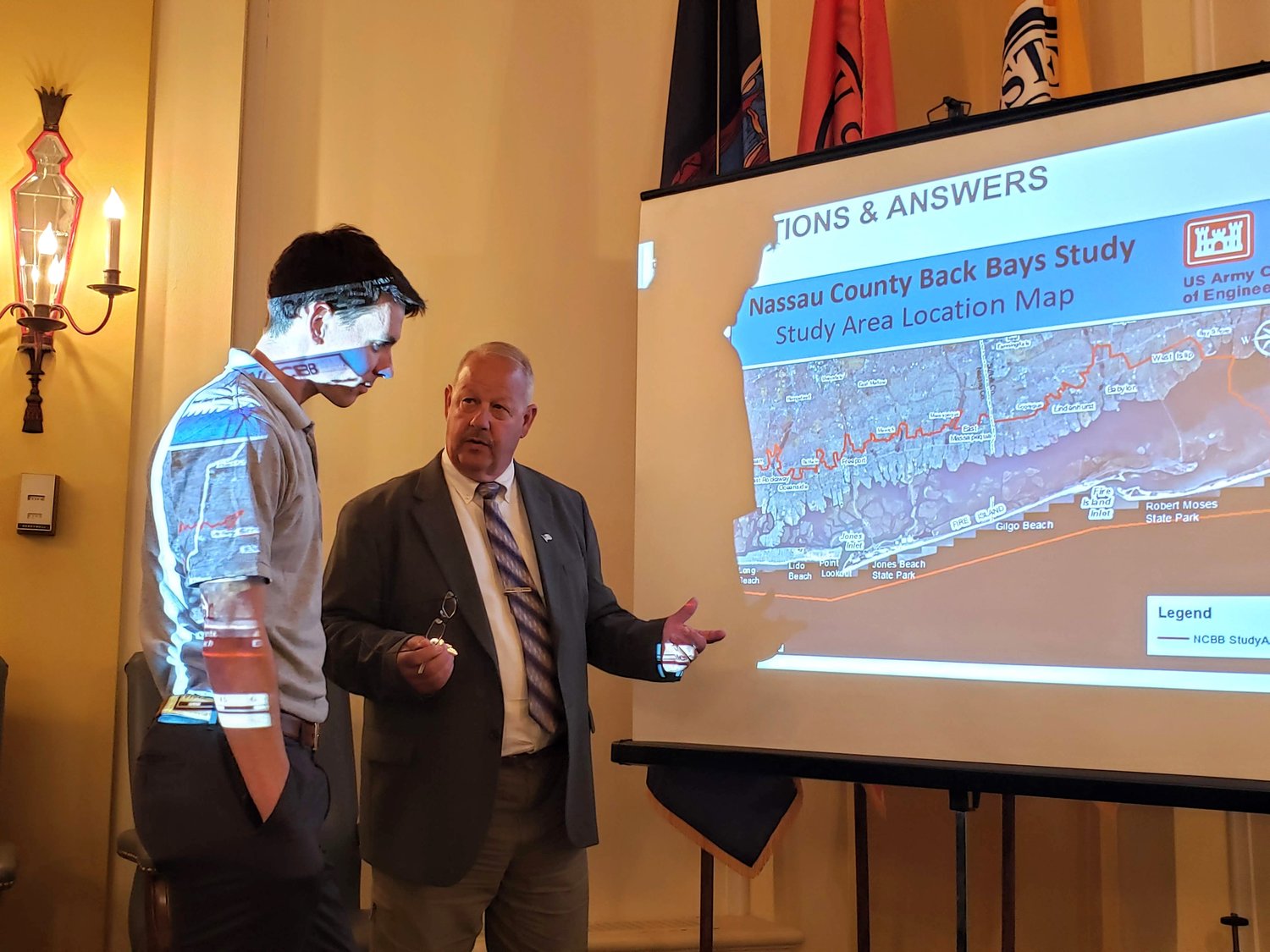‘Waiting for 2030 is unacceptable’
Residents angry — study offers no flooding solutions
Nearly three years have passed, but the Nassau County Back Bays Coastal Storm Risk Management Feasibility Study to examine, in part, if storm gates can be installed at the Jones and East Rockaway inlets, will require more time, according to Scott Sanderson, section chief of coastal planning for the U.S. Army Corps of Engineers, Philadelphia District.
Sanderson, who presented the Army Corps’ findings on June 12 at Freeport Village Hall, said the study must consider past, current and future coastal storm risk management and resiliency planning.
“It’s complicated,” he said.
The study got underway in 2016. “I don’t think they should get an extension,” said Donna Shannon, of East Rockaway. “They had three years. We need something now.”
Shannon attended the meeting because, she said, she was frustrated by flooding on her street and in her community. She thinks the Army Corps is “stonewalling” with its request for more time. “They need to prioritize what can be done today,” she said. “The South Shore is still vulnerable to a storm.”
The study is examining 30 miles of Long Island’s southern shoreline, from east to west, primarily in Nassau County but also in parts of Queens and Suffolk County. Specifically, the study is examining Atlantic Ocean tides and their effect on the bays.
Sanderson said the Army Corps needs more time to develop plans before installing any flood-mitigation measures. The study comes after the South Shore was battered by Hurricane Sandy in October 2012.
Three more years of study for an additional $3 million is “unacceptable,” according to Freeport Mayor Robert Kennedy, who said he believes constructing $300 million surge gates could stop another major flood in a storm like Sandy.
“I thought that their recent review of surge barrier gates at Jones Inlet and East Rockaway Inlet was a duplication of what I suggested over three years ago,” Kennedy said after the meeting.
Kennedy has advocated surge gates since the aftermath of Sandy. Most of the floodwaters that inundated the South Shore during the storm came through the Jones and East Rockaway inlets. Sandy’s total estimated damage was $65 billion, and it was one of the largest and costliest storms ever to hit the East Coast.
The study did include suggestions to elevate homes, restore marshes and create “living shorelines,” documents show, but Kennedy said that none of that information was new.
“I’m, at best, unimpressed,” Kennedy said, “with the update and status provided by the Army Corps.”
According to the new proposed schedule to finalize the study, Sanderson said, the final Chief of Engineers Report should be ready by April 2022. At that point, the report would be submitted to Congress for review. Sanderson said he was uncertain how long Congress would take to approve the study.
“The proposed schedule suggests that corrective measures to reduce or eliminate flooding in Nassau County could not possibly be implemented until 2027 to 2030,” Kennedy said.
Long Islanders who attended the meeting said they were disappointed by the report. Shannon said she thought the Army Corps did not prioritize the South Shore, and said it should consider short- and long-term plans.
“It’s unfair to have everyone rebuild their homes on unsafe infrastructures,” Shannon said. The Army Corps “is not immediately addressing the issues of the creeks and canals that surround properties where there is still flooding. What about our protections? Waiting until 2030 is unacceptable.”

 49.0°,
Fair
49.0°,
Fair 








